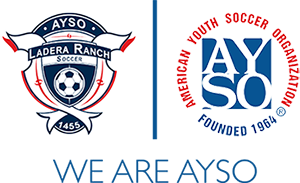A soccer formation (also called a “system”) is simply how you structure the different positions on the field. Formations are always notated the same way starting with the number of fullbacks, then midfielders, then forwards. Goalkeepers are always ignored because there is always one and it’s the only mandatory position on the field. So if you have 3 fullbacks, 3 midfielders, and 2 forwards, the notation is 3-3-2 for a 9 player side. For a 4 player side you might have 1-3, which is one fullback and 3 midfielders. Note that you may not always play 3 tiers like in the 4v4 side just provided. You may also have more than 3 tiers, especially when you play 11 a side.
Choosing a formation for your team is a very big contribution you can make for your team when done correctly. Though there is nothing wrong with just sticking with the most popular formations, you may eek out some advantages with a slightly deeper analysis.
In Choosing Player Positions we covered the characteristics that lend certain players to certain positions. Of course you will never have an even distribution of players so in every season you will be confronted with tradeoffs. Note: even if you had a perfect distribution you will ALWAYS rotate all players through multiple positions.
Player Inventory
After you’ve had a few practices to get a feel for your players’ strengths and weaknesses, you should have a sense of players that will gravitate toward certain positions. Also, don’t be afraid to ASK YOUR PLAYERS what positions they like to play. Some seasons I’ve had 100% mid and forwards, and sometimes I’ve gotten a ton of defenders. Though it’s important you never always let players play their favorite positions, there is absolutely nothing wrong with honoring play requests where it makes sense even if the favorite position isn’t in their wheelhouse.
Team Distribution
The reality on any recreational team is that you will have a very wide distribution of natural talent and skill for your players. While I am 100% ok with structuring your team such that dominant players play the most central positions, I’m also 100% against instructing your team to always play to stronger players. So while I may play Billy Whiz-kid as a center-mid half the game, I will never tell my players to “always pass to Billy when you can”.
As with any standard distribution, most of your players will be of average ability with a few below and a few above. While your objective as a coach is to always uplevel the entire team, you have a short runway until the season and you need to be realistic about your talent distribution. So let’s say you’re 12u 9v9 with 12 players per team. In your case you have 5 dominant players, 3 middle, and 4 less developed. Remember that your formation assumes all players are always there and that you will always be sitting one dominant player per quarter. That leaves you 4 players to help you select an appropriate formation around. You’ll also have on average 3 less developed players that you’ll need to ensure have positions where they can be provided the most support. If you provide adequate support to those players it gives them more opportunities to be creative and develop faster. It also structurally takes pressure off them and the team which makes it more enjoyable for everybody.
The Core Formation
If the most important part of the field to control is middle, then you’ll want to overload the middle with strong players while providing a strong player as centerback and one as forward. That gives you a 1-2-1 as the structural basis of your formation (or Core Formation). Then depending on your coaching style of play you can fill in players around that, playing perhaps a 3-4-1 if you are a possession-based coach or a 3-2-3 if you are more of a counter-attacking coach. In any case this allows you to comfortably place all players without leaving any major gaps and provides great opportunity to expose all players to offensive and defensive positions (via outside fullbacks and wings in the latter example).
Putting it Together



Leave A Comment